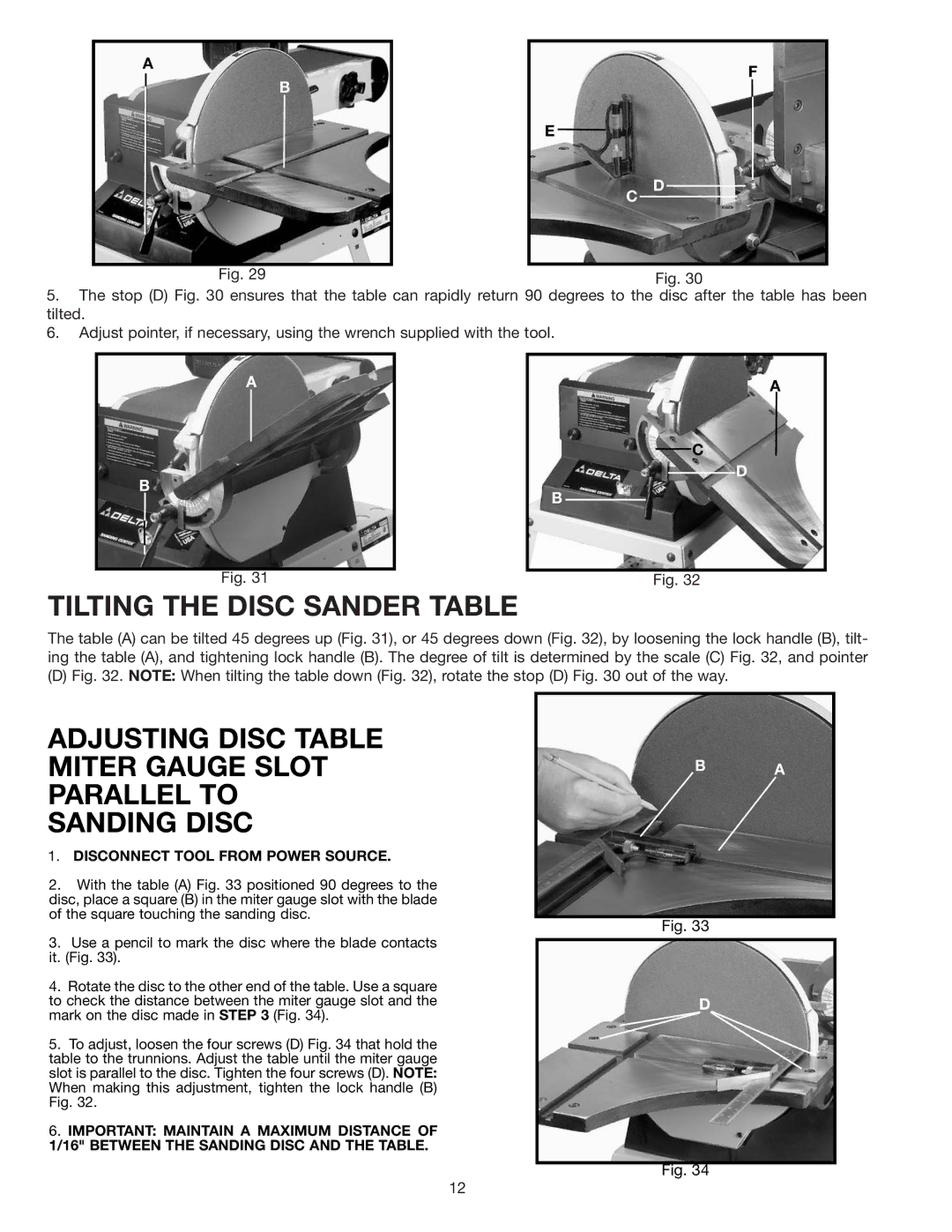
A
B
E
C
F
D
Fig. 30
5.The stop (D) Fig. 30 ensures that the table can rapidly return 90 degrees to the disc after the table has been tilted.
6.Adjust pointer, if necessary, using the wrench supplied with the tool.
A
B
Fig. 31
TILTING THE DISC SANDER TABLE
A
C
D
B
Fig. 32
The table (A) can be tilted 45 degrees up (Fig. 31), or 45 degrees down (Fig. 32), by loosening the lock handle (B), tilt- ing the table (A), and tightening lock handle (B). The degree of tilt is determined by the scale (C) Fig. 32, and pointer
(D) Fig. 32. NOTE: When tilting the table down (Fig. 32), rotate the stop (D) Fig. 30 out of the way.
ADJUSTING DISC TABLE MITER GAUGE SLOT PARALLEL TO SANDING DISC
1.DISCONNECT TOOL FROM POWER SOURCE.
2.With the table (A) Fig. 33 positioned 90 degrees to the disc, place a square (B) in the miter gauge slot with the blade of the square touching the sanding disc.
3.Use a pencil to mark the disc where the blade contacts it. (Fig. 33).
4.Rotate the disc to the other end of the table. Use a square to check the distance between the miter gauge slot and the mark on the disc made in STEP 3 (Fig. 34).
5.To adjust, loosen the four screws (D) Fig. 34 that hold the table to the trunnions. Adjust the table until the miter gauge slot is parallel to the disc. Tighten the four screws (D). NOTE: When making this adjustment, tighten the lock handle (B) Fig. 32.
6.IMPORTANT: MAINTAIN A MAXIMUM DISTANCE OF 1/16" BETWEEN THE SANDING DISC AND THE TABLE.
B A
Fig. 33
D
Fig. 34
12
